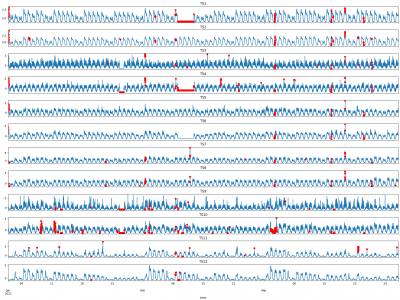Machine Learning

As communications service providers ponder ways to cater to the diverse traffic requirements of mobile applications that range from the classic telephony to modern augmented reality (AR)-related use cases, the traditional quality of service (QoS)-based radio resource management (RRM) techniques for RAN slicing that are agnostic to the intrinsic workings of applications can result in a poor quality of experience (QoE) for the end-user. We argue that in addition to QoS, RAN slicing strategies should also consider QoE for efficient resource utilization.
- Categories:
 348 Views
348 Views
The uploaded dataset appears to be related to various composite materials, and it includes the following columns:
- Categories:
 462 Views
462 Views
Blade damage inspection without stopping the normal operation of wind turbines has significant economic value. This study proposes an AI-based method AQUADA-Seg to segment the images of blades from complex backgrounds by fusing optical and thermal videos taken from normal operating wind turbines. The method follows an encoder-decoder architecture and uses both optical and thermal videos to overcome the challenges associated with field application.
- Categories:
 1165 Views
1165 ViewsA recent study [1] alerts on the limitations of evaluating anomaly detection algorithms on popular time-series datasets such as Yahoo, Numenta, or NASA, among others. In particular, these datasets are noted to suffer from known flaws suchas trivial anomalies, unrealistic anomaly density, mislabeled ground truth, and run-to-failure bias. The TELCO dataset corresponds to twelve different time-series, with a temporal granularity of five minutes per sample, collected and manually labeled for a period of seven months between January 1 and July 31, 2021.
- Categories:
 840 Views
840 ViewsThe dataset was generated through the execution of a Python script designed to collect a comprehensive set of data samples from six different sensors for each specific gesture. Upon launching the script, users are prompted to initiate gesture 0, Once ready, users can commence recording, with the program automatically capturing 1000 samples for that particular gesture. Subsequently, the program prompts users to perform gesture 1, and this process repeats until data for all gestures is collected.
- Categories:
 242 Views
242 ViewsThe Sentinel-2 L2A multispectral data cubes include two regions of interest (roi1 and roi2) each of them containing 92 scenes across Switzerland within T32TLT, between 2018 and 2022, all band at 10m resolution These areas of interest show a diverse landscape, including regions covered by forests that have undergone changes, agriculture and urban areas.
- Categories:
 1982 Views
1982 Views
Human biomechanics is still an active topic of research that requires more technological advancements and data collection of various human body movements. There is a need for methodologies to identify daily activities in various scenarios, such as one while carrying a school bag. Deakin university has developed an Internet of Things (IoT) enabled smart school bag consisting of motion analysis sensors that would recognize the activities performed while carrying the school bag.
- Categories:
 110 Views
110 Views
This comprehensive dataset comprises multiple files, encompassing essential information on various aspects of power systems. It includes the active and reactive power consumption data for both the 33- and 136-bus test systems, along with the resistance and reactance values of the distribution lines, and the network structure.
- Categories:
 158 Views
158 ViewsSet of samples resulting from an evaluative, population-based cross-sectional study, approved by the Research Ethics Committee of Federal University of Alfenas, protocol: 415856. These samples pertain to 1,027 rural workers from the southern region of Minas Gerais, Brazil, where comprehensive data on socioeconomic factors, history of pesticide intoxication and hospitalization, and usage of personal protective equipment were collected. Blood samples were obtained to measure biomarkers of pesticide exposure as well as indicators of renal and hepatic sequelae.
- Categories:
 770 Views
770 Views



